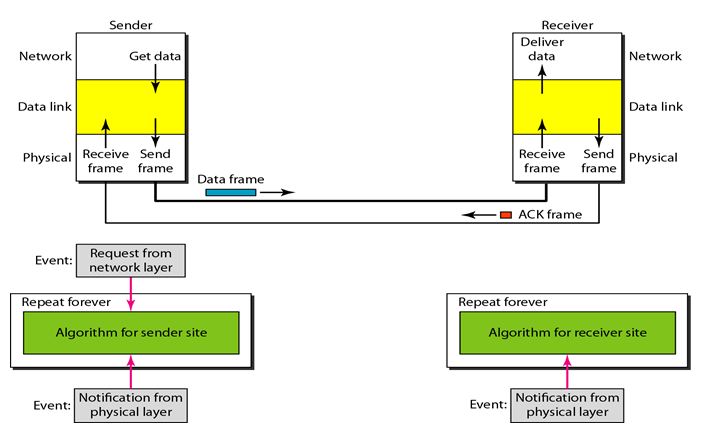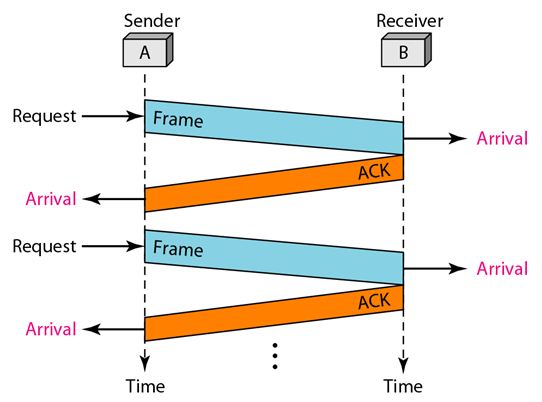Stop-and-Wait Protocol
If data frames arrive at the receiver site faster than they can be processed, the frames must be stored until their use. Normally, the receiver does not have enough storage space, especially if it is receiving data from many sources. This may result in either the discarding of frames or denial of service. To prevent the receiver from becoming overwhelmed with frames, we somehow need to tell the sender to slow down. There must be feedback from the receiver to the sender.
In Stop-and-Wait Protocol, the sender sends one frame, stops until it receives confirmation from the receiver (okay to go ahead), and then sends the next frame. We still have unidirectional communication for data frames, but auxiliary ACK frames (simple tokens of acknowledgment) travel from the other direction. We added flow control to the Simplest protocol.
You May Also Like:
Framing and Framing Protocols
Simplest Protocol
Stop and Wait With ARQ Protocol
Go-Back-N ARQ Protocol
Design
The following figure illustrates the mechanism. We can see the traffic on the forward channel (from sender to receiver) and the reverse channel. At any time, there is either one data frame on the forward channel or one ACK frame on the reverse channel. We therefore need a half-duplex link.
In this protocol, the sender sends one frame and waits for feedback from the receiver. When the ACK arrives, the sender sends the next frame. Note that sending two frames in the protocol involves the sender in four events and the receiver in two events.
You May Also Like:
Selective Repeat ARQ Protocol
Piggybacking Protocol
HDLC Configurations,Transfer Modes and Different Types of Frames
Control Fields of HDLC Frames
Back to DCN Questions and Answers



